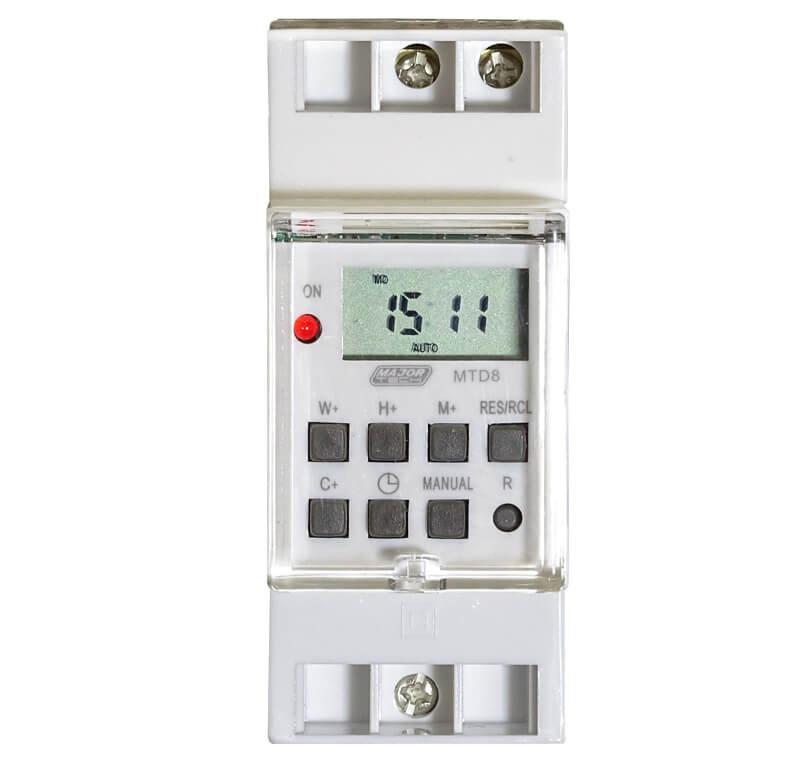Understanding the Common Issues Linked With Geyser Timers for Effective Water Heating
The reliable performance of geyser timers is necessary for optimizing water heating efficiency, yet users often run into an array of common concerns that can compromise performance. Recognizing these aspects is vital to ensuring that hot spring systems run at their ideal, welcoming a more detailed assessment of the services that can address these widespread worries.
Common Malfunctions

One common malfunction is the failure of the timer to initiate home heating cycles. This can take place due to electrical problems, such as a blown fuse or faulty wiring, avoiding the timer from obtaining power.

Incorrect Timer Settings
Misconfiguration of timer setups is a typical problem that can bring about substantial inefficiencies in geyser procedure. When timers are established incorrectly, they might turn on the geyser at suboptimal times, leading to either inadequate home heating of water or excessive energy intake. If the timer is set to transform on throughout height electricity hours, it not only pumps up energy costs yet likewise leads to unneeded pressure on the electric infrastructure.
Furthermore, inaccurate timer setups can interfere with the accessibility of warm water when needed - geyser timer. A poorly set up routine might leave families without hot water throughout top use periods, triggering inconvenience and aggravation. On the other hand, continuous operation as a result of misconfigured timers can cause getting too hot, harming the hot spring and enhancing upkeep costs
To mitigate these issues, normal checks and updates of timer setups are vital. Users should familiarize themselves with their hot spring's home heating requirements and readjust the timer to straighten with their certain demands. Executing an user-friendly scheduling system can better improve this process, ensuring ideal efficiency and maximizing energy performance. Correctly set up timer settings inevitably contribute to a much more cost-effective and sustainable water heating remedy.
Compatibility Problems
Compatibility concerns can substantially affect the performance of hot spring timers, specifically when integrating with various home heating systems or smart home modern technologies (geyser timer). Many hot spring timers are designed to collaborate with specific types of water heaters, such as resisting burner or gas-fired systems. If a timer is not compatible with the heating unit, it might not operate properly, causing inefficient water heating and even damage to the system
Additionally, as clever home innovation remains to evolve, the integration of geyser timers with home automation systems can posture obstacles. Not all hot spring timers provide the same level of connection, which can hinder their capability to communicate efficiently with mobile applications or wise centers. Individuals might locate themselves not able to regulate their hot spring timers remotely or set schedules that align with various other clever devices in their home.
Additionally, the compatibility of hot spring timers with existing electric facilities can likewise be an issue. Variants in voltage scores, electrical Resources wiring standards, and circuit setups can bring about functional issues. It is crucial to completely examine compatibility with both the home heating devices and the home's electrical system prior to picking a hot spring timer to make sure ideal performance.
Power Supply Troubles
Power supply issues can seriously impede the capability of hot spring timers, causing unstable procedure and enhanced energy costs. These concerns might originate from poor voltage supply, irregular power resources, or damaged circuitry. A geyser timer needs a stable electric input to work ideally; variations can lead to erratic efficiency or total failure.
Additionally, wrong voltage scores can harm the timer, rendering it defective. It is essential to make certain that the geyser timer is suitable with the electrical specifications of the setup website. Furthermore, power surges or disruptions can interfere with the timer's programs, bring about inefficient home heating cycles and unforeseen functional hold-ups.
In instances of persistent power supply issues, consulting a certified electrical expert is recommended to make sure that the electrical infrastructure effectively sustains the hot spring timer's needs. Correct attention to power supply can enhance the performance and long life of the hot spring timer system.
Upkeep and Troubleshooting
Routine maintenance and troubleshooting are crucial for making certain the reliable operation of hot spring timers. Consistently clean the timer device and bordering locations to avoid dust buildup, which can conflict with its operation.
If concerns arise, start troubleshooting by resetting the timer to its default settings. Validate the power supply to guarantee the timer is receiving adequate voltage.
Additionally, consider scheduling professional inspections annually to address potential issues proactively. This strategy can prolong the life expectancy of the hot spring timer and optimize its efficiency. By prioritizing upkeep and reliable troubleshooting, customers can reduce common troubles and make sure constant performance from their geyser timers.
Verdict
To conclude, recognizing and dealing with the common concerns connected with hot spring timers is crucial for maximizing water heating performance. Timer breakdowns, inaccurate settings, compatibility obstacles, and power supply issues can considerably affect performance. Routine upkeep and troubleshooting can reduce these concerns, guaranteeing that geyser systems run accurately and successfully. By proactively handling these elements, energy performance can be improved, leading to improved water home heating efficiency and lowered functional expenses.
The efficient performance of geyser timers is necessary for optimizing water home heating performance, yet customers often encounter an array of common issues that can compromise performance. When timers are set improperly, they might turn on go to this web-site the geyser at suboptimal times, resulting in either insufficient heating of water or extreme energy usage.Compatibility problems can considerably affect the efficiency of hot spring timers, particularly when integrating with various heating systems or clever home technologies. Many hot spring timers are made to work with particular kinds of water heaters, such as repellent home heating aspects or gas-fired systems.In final thought, acknowledging and resolving the usual issues linked with hot spring timers is necessary for go right here enhancing water heating effectiveness.